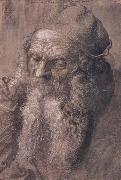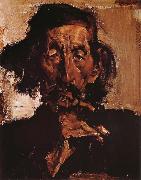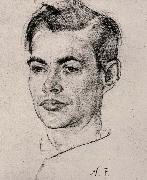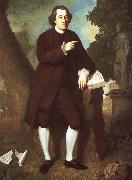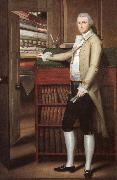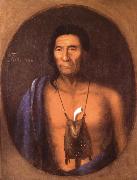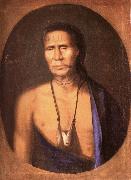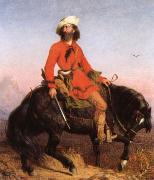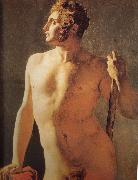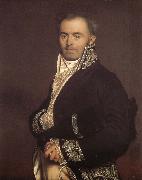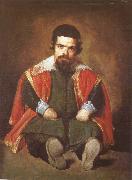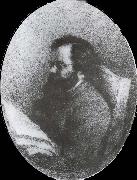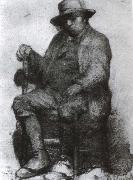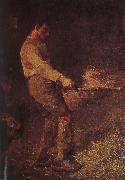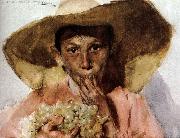Wholesale Oil Painting No Minimum |
|||||||||||
|
|
|||||||||||

|
|||||||||||
|
|
|
||||||||
Albrecht Durerb.May 21, 1471, Imperial Free City of Nernberg [Germany] d.April 6, 1528, Nernberg Albrecht Durer (May 21, 1471 ?C April 6, 1528) was a German painter, printmaker and theorist from Nuremberg. His still-famous works include the Apocalypse woodcuts, Knight, Death, and the Devil (1513), Saint Jerome in his Study (1514) and Melencolia I (1514), which has been the subject of extensive analysis and interpretation. His watercolours mark him as one of the first European landscape artists, while his ambitious woodcuts revolutionized the potential of that medium. D??rer introduction of classical motifs into Northern art, through his knowledge of Italian artists and German humanists, have secured his reputation as one of the most important figures of the Northern Renaissance. This is reinforced by his theoretical treatise which involve principles of mathematics, perspective and ideal proportions. His prints established his reputation across Europe when he was still in his twenties, and he has been conventionally regarded as the greatest artist of the Renaissance in Northern Europe ever since. |
||||||||
|
|
||||||||
Man
Man Painting ID:: 42289 |
mk168
age ninety-three
415x252mm
mk168 age ninety-three 415x252mm |
|||||||
|
|
||||||||
Nikolay FechinRussian, 1881-1955 |
||||||||
|
|
||||||||
|
|
Man
Man Painting ID:: 50418 |
mk211
oil painting
50.8x40.6cm
mk211 oil painting 50.8x40.6cm |
||||||
|
|
||||||||
Nikolay FechinRussian, 1881-1955 |
||||||||
|
|
||||||||
|
|
Man
Man Painting ID:: 50425 |
mk211
1938
oil painting
51.1x40.6cm
mk211 1938 oil painting 51.1x40.6cm |
||||||
|
|
||||||||
Nikolay FechinRussian, 1881-1955 |
||||||||
|
|
||||||||
|
|
Man
Man Painting ID:: 50462 |
mk211
mk211 |
||||||
|
|
||||||||
Charles Wilson Peale1741-1827 Charles Wilson Peale Galleries Finding that he had a talent for painting, especially portraitures, Peale studied for a time under John Hesselius and John Singleton Copley. Friends eventually raised enough money for him to travel to England to take instruction from Benjamin West. Peale studied with West for two years beginning in 1767, afterward returning to America and settling in Annapolis, Maryland. There, he taught painting to his younger brother, James Peale, who in time also became a noted artist. Peale's enthusiasm for the nascent national government brought him to the capital, Philadelphia, in 1776, where he painted portraits of American notables and visitors from overseas. His estate, which is on the campus of La Salle University in Philadelphia, can still be visited. He also raised troops for the War of Independence and eventually gained the rank of captain in the Pennsylvania militia by 1777, having participated in several battles. While in the field, he continued to paint, doing miniature portraits of various officers in the Continental Army. He produced enlarged versions of these in later years. He served in the Pennsylvania state assembly in 1779-1780, after which he returned to painting full-time. Peale painted in the trompe l'oeil style,[1] and was quite prolific as an artist. While he did portraits of scores of historic figures (such as John Hancock, Thomas Jefferson and Alexander Hamilton), he is probably best known for his portraits of George Washington. The first time Washington ever sat for a portrait was with Peale in 1772, and there would be six other sittings; using these seven as models, Peale produced altogether close to 60 portraits of Washington. In January 2005, a full length portrait of "Washington at Princeton" from 1779 sold for $21.3 million dollars - setting a record for the highest price paid for an American portrait. Peale had a great interest in natural history, and organized the first U.S. scientific expedition in 1801. These two major interests combined in his founding of what became the Philadelphia Museum, and was later renamed the Peale Museum. This museum is considered the first. It housed a diverse collection of botanical, biological, and archaeological specimens. Most notably, the museum contained a large variety of birds which Peale himself acquired, and it was the first to display North American mammoth bones. The display of the mammoth bones entered Peale into a long standing debate between Thomas Jefferson and Comte de Buffon. Buffon argued that Europe was superior to the Americas biologically, which was illustrated through the size of animals found there. Jefferson referenced the existence of these mammoths (which he believed still roamed northern regions of the continent) as evidence for a greater biodiversity in America. Peale's display of these bones drew attention from Europe, as did his method of re-assembling large skeletal specimens in three dimensions. The museum was among the first to adopt Linnaean taxonomy. This system drew a stark contrast between Peale's museum and his competitors who presented their artifacts as mysterious oddities of the natural world. The museum underwent several moves during its existence. At various times it was located in several prominent buildings including Independence Hall and the original home of the American Philosophical Association. The museum would eventually fail in large part because Peale was unsuccessful at obtaining government funding. After his death, the museum was sold to, and split up by, showmen P. T. Barnum and Moses Kimball. |
||||||||
|
|
||||||||
|
|
Man
Man Painting ID:: 50481 |
mk212
200.8x147.1cm
mk212 200.8x147.1cm |
||||||
|
|
||||||||
Ralph Earl1751- 1801 Ralph Earl Galleries Ralph Earl was born in either Shrewsbury or Leicester, Massachusetts. By 1774, he was working in New Haven, Connecticut as a portrait painter. In the autumn of 1774, Earl returned to Leicester, Massachusetts to marry his cousin, Sarah Gates. A few months later, their daughter was born; however, Earl left them both with Sarah's parents and returned to New Haven. Like so many of the colonial craftsmen, Earl was self-taught, and for many years was an itinerant painter. In 1775, Earl visited Lexington and Concord, which were the sites of recent battles in the American Revolution. Together with engraver Amos Doolittle, he painted four of his most famous pictures, all battle scenes. Although his father was a colonel in the Revolutionary army, Ralph Earl himself was a Loyalist. In 1778, he left behind his wife and daughter and escaped to England by disguising himself as the servant of British army captain John Money. |
||||||||
|
|
||||||||
|
|
Man
Man Painting ID:: 50492 |
mk212
1789
Oil on canvas
83x51cm
mk212 1789 Oil on canvas 83x51cm |
||||||
|
|
||||||||
|
|
||||||||
|
|
Man
Man Painting ID:: 50497 |
mk212
1735
Oil on canvas
33x25in
mk212 1735 Oil on canvas 33x25in |
||||||
|
|
||||||||
|
|
||||||||
|
|
Man
Man Painting ID:: 50498 |
mk212
1735
Oil on canvas
33x25in
83.8x63.5cm
mk212 1735 Oil on canvas 33x25in 83.8x63.5cm |
||||||
|
|
||||||||
Charles Deas1818-1867,American painter. After an unsuccessful attempt to obtain an appointment at West Point Military Academy, he turned to an artistic career. He quickly earned recognition at the annual exhibitions of the National Academy of Design, New York, to which he was elected an associate member in 1839, with subjects taken from James Fenimore Cooper, such as the Turkey Shoot (c. 1837; Richmond, VA Mus. F.A.), and from Washington Irving, The Devil and Tom Walker (1838; Richard P. W. Williams priv. col.). |
||||||||
|
|
||||||||
|
|
Man
Man Painting ID:: 50555 |
mk212
1844
Oil on canvas
30x25in
mk212 1844 Oil on canvas 30x25in |
||||||
|
|
||||||||
Jean-Auguste Dominique IngresFrench Neoclassical Painter, 1780-1867 was a French Neoclassical painter. Although he considered himself a painter of history in the tradition of Nicolas Poussin and Jacques-Louis David, by the end of his life it was Ingres' portraits, both painted and drawn, that were recognized as his greatest legacy. A man profoundly respectful of the past, he assumed the role of a guardian of academic orthodoxy against the ascendant Romantic style represented by his nemesis Eug??ne Delacroix. His exemplars, he once explained, were "the great masters which flourished in that century of glorious memory when Raphael set the eternal and incontestable bounds of the sublime in art ... I am thus a conservator of good doctrine, and not an innovator." Nevertheless, modern opinion has tended to regard Ingres and the other Neoclassicists of his era as embodying the Romantic spirit of his time, while his expressive distortions of form and space make him an important precursor of modern art.. |
||||||||
|
|
||||||||
|
|
Man
Man Painting ID:: 53178 |
mk227
1800
Oil on canvas
mk227 1800 Oil on canvas |
||||||
|
|
||||||||
Jean-Auguste Dominique IngresFrench Neoclassical Painter, 1780-1867 was a French Neoclassical painter. Although he considered himself a painter of history in the tradition of Nicolas Poussin and Jacques-Louis David, by the end of his life it was Ingres' portraits, both painted and drawn, that were recognized as his greatest legacy. A man profoundly respectful of the past, he assumed the role of a guardian of academic orthodoxy against the ascendant Romantic style represented by his nemesis Eug??ne Delacroix. His exemplars, he once explained, were "the great masters which flourished in that century of glorious memory when Raphael set the eternal and incontestable bounds of the sublime in art ... I am thus a conservator of good doctrine, and not an innovator." Nevertheless, modern opinion has tended to regard Ingres and the other Neoclassicists of his era as embodying the Romantic spirit of his time, while his expressive distortions of form and space make him an important precursor of modern art.. |
||||||||
|
|
||||||||
|
|
Man
Man Painting ID:: 53202 |
mk227
Oil on canvas
96.5x78.5cm
1811
mk227 Oil on canvas 96.5x78.5cm 1811 |
||||||
|
|
||||||||
VELAZQUEZ, Diego Rodriguez de Silva ySpanish Baroque Era Painter, 1599-1660 Spanish painter. He was one of the most important European artists of the 17th century, spending his career from 1623 in the service of Philip IV of Spain. His early canvases comprised bodegones and religious paintings, but as a court artist he was largely occupied in executing portraits, while also producing some historical, mythological and further religious works. His painting was deeply affected by the work of Rubens and by Venetian artists, especially Titian, as well as by the experience of two trips (1629-31 and 1649-51) to Italy. Under these joint influences he developed a uniquely personal style characterized by very loose, expressive brushwork. |
||||||||
|
|
||||||||
|
|
Man
Man Painting ID:: 54760 |
mk237
1644
Oil on canvas
106.5x81.5cm
mk237 1644 Oil on canvas 106.5x81.5cm |
||||||
|
|
||||||||
Gustave Courbet1819-1877 French Gustave Courbet Locations was a French painter whose powerful pictures of peasants and scenes of everyday life established him as the leading figure of the realist movement of the mid-19th century. Gustave Courbet was born at Ornans on June 10, 1819. He appears to have inherited his vigorous temperament from his father, a landowner and prominent personality in the Franche-Comte region. At the age of 18 Gustave went to the College Royal at Besancon. There he openly expressed his dissatisfaction with the traditional classical subjects he was obliged to study, going so far as to lead a revolt among the students. In 1838 he was enrolled as an externe and could simultaneously attend the classes of Charles Flajoulot, director of the ecole des Beaux-Arts. At the college in Besançon, Courbet became fast friends with Max Buchon, whose Essais Poetiques (1839) he illustrated with four lithographs. In 1840 Courbet went to Paris to study law, but he decided to become a painter and spent much time copying in the Louvre. In 1844 his Self-Portrait with Black Dog was exhibited at the Salon. The following year he submitted five pictures; only one, Le Guitarrero, was accepted. After a complete rejection in 1847, the Liberal Jury of 1848 accepted all 10 of his entries, and the critic Champfleury, who was to become Courbet first staunch apologist, highly praised the Walpurgis Night. |
||||||||
|
|
||||||||
|
|
Man
Man Painting ID:: 55609 |
mk242
1854-1857
mk242 1854-1857 |
||||||
|
|
||||||||
Gustave Courbet1819-1877 French Gustave Courbet Locations was a French painter whose powerful pictures of peasants and scenes of everyday life established him as the leading figure of the realist movement of the mid-19th century. Gustave Courbet was born at Ornans on June 10, 1819. He appears to have inherited his vigorous temperament from his father, a landowner and prominent personality in the Franche-Comte region. At the age of 18 Gustave went to the College Royal at Besancon. There he openly expressed his dissatisfaction with the traditional classical subjects he was obliged to study, going so far as to lead a revolt among the students. In 1838 he was enrolled as an externe and could simultaneously attend the classes of Charles Flajoulot, director of the ecole des Beaux-Arts. At the college in Besançon, Courbet became fast friends with Max Buchon, whose Essais Poetiques (1839) he illustrated with four lithographs. In 1840 Courbet went to Paris to study law, but he decided to become a painter and spent much time copying in the Louvre. In 1844 his Self-Portrait with Black Dog was exhibited at the Salon. The following year he submitted five pictures; only one, Le Guitarrero, was accepted. After a complete rejection in 1847, the Liberal Jury of 1848 accepted all 10 of his entries, and the critic Champfleury, who was to become Courbet first staunch apologist, highly praised the Walpurgis Night. |
||||||||
|
|
||||||||
|
|
Man
Man Painting ID:: 55612 |
mk242
1843
33x24cm
mk242 1843 33x24cm |
||||||
|
|
||||||||
Jean Francois Millet1814-1875 French Jean Francois Millet Galleries Millet was the first child of Jean-Louis-Nicolas and Aim??e-Henriette-Adelaide Henry Millet, members of the peasant community in the village of Gruchy, in Gr??ville-Hague (Normandy). Under the guidance of two village priests, Millet acquired a knowledge of Latin and modern authors, before being sent to Cherbourg in 1833 to study with a portrait painter named Paul Dumouchel. By 1835 he was studying full-time with Lucien-Th??ophile Langlois, a pupil of Baron Gros, in Cherbourg. A stipend provided by Langlois and others enabled Millet to move to Paris in 1837, where he studied at the Ecole des Beaux-Arts with Paul Delaroche. In 1839 his scholarship was terminated, and his first submission to the Salon was rejected. After his first painting, a portrait, was accepted at the Salon of 1840, Millet returned to Cherbourg to begin a career as a portrait painter. However, the following year he married Pauline-Virginie Ono, and they moved to Paris. After rejections at the Salon of 1843 and Pauline's death by consumption, Millet returned again to Cherbourg. In 1845 Millet moved to Le Havre with Catherine Lemaire, whom he would marry in a civil ceremony in 1853; they would have nine children, and remain together for the rest of Millet's life. In Le Havre he painted portraits and small genre pieces for several months, before moving back to Paris. It was in Paris in the middle 1840s that Millet befriended Constant Troyon, Narcisse Diaz, Charles Jacque, and Theodore Rousseau, artists who, like Millet, would become associated with the Barbizon school; Honor?? Daumier, whose figure draftsmanship would influence Millet's subsequent rendering of peasant subjects; and Alfred Sensier, a government bureaucrat who would become a lifelong supporter and eventually the artist's biographer. In 1847 his first Salon success came with the exhibition of a painting Oedipus Taken down from the Tree, and in 1848 his Winnower was bought by the government. |
||||||||
|
|
||||||||
|
|
Man
Man Painting ID:: 55794 |
mk245
1848
79.5x58.5cm
Oil on canvas
mk245 1848 79.5x58.5cm Oil on canvas |
||||||
|
|
||||||||
Joaquin SorollaSpanish Realist/Impressionist Painter, 1863-1923 |
||||||||
|
|
||||||||
|
|
Man
Man Painting ID:: 61827 |
mk275 Mudd Resor Royar memorial hall mk275 Mudd Resor Royar memorial hall |
||||||
|
|
||||||||
|
Joaquin Sorolla Spanish Realist/Impressionist Painter, 1863-1923 Man mk275 Mudd Resor Royar memorial hall |
||||||||
|
|
||||||||
|
Prev Next
|
||||||||
|
|
||||||||
|
Related Paintings to Joaquin Sorolla :. |
||||||||
|
|
||||||||
|
CONTACT US |
